Did you know that melons are among the few fruits gentle enough for even the most sensitive stomachs?
It’s their low acidity that does the trick, making them a rare treat in the fruit world. I’ve always wondered, what exactly makes them so kind to our tummies and yet so deliciously sweet?

Let’s dive in together and uncover the secret behind their mild acidity.
Highlights
- Ever noticed how some fruits leave you feeling a bit off, but melons don’t? That’s because they’re super low in acidity! Honeydew and cantaloupe are like the stomach’s best friends — sweet without making you pucker up or feel uncomfortable.
- Melons = Nutrient Bombs: Besides being delicious, melons pack a punch with vitamins C and A, keep you hydrated, and even help with your daily fiber intake.
- Did you know the trick to a delicious melon lies in its ripeness? That’s right, a melon that’s ripe to perfection is naturally sweeter and less acidic.
In this article:
Are Melons Acidic?
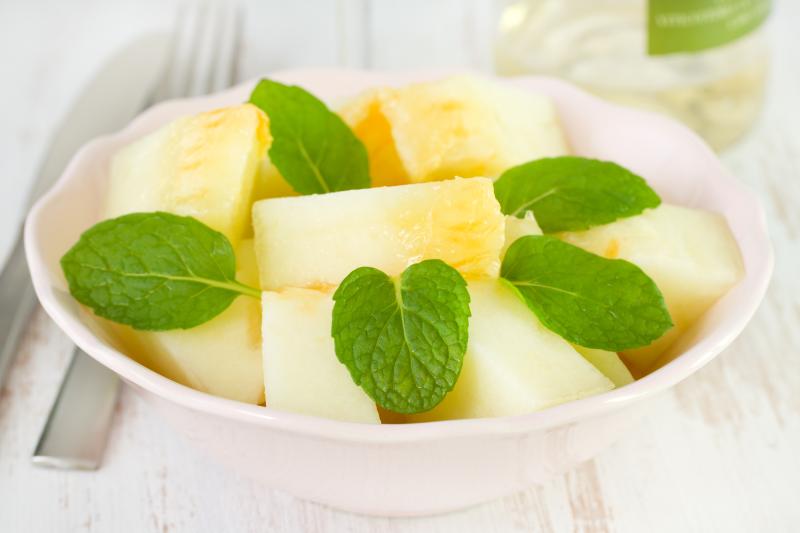
First off, when we talk about melons, we’re painting with a broad brush. There are so many types, from the sweet and succulent watermelon to the creamy cantaloupe and the honeydew with its subtle sweetness.
But the burning question remains: how acidic are these delicious fruits?
Melons are among the few fruits that exhibit almost neutral acidity, with their pH levels approaching the near-neutral mark of 7. This makes them a fantastic choice for those of us looking to keep our diet low in acidic foods.
Specifically, honeydew melons boast a pH range of about 6.0 to 6.7, placing them among the least acidic fruits.
They’re not just easy on the palate but also gentle on the stomach. Cantaloupes follow closely, with a pH ranging from 6.1 to 6.8, offering a sweet, musky flavor that’s both refreshing and stomach-friendly.
It’s worth mentioning that the perceived acidity of melons can also depend on their ripeness. A fully ripe melon will generally taste sweeter and less acidic than one that’s underripe.
What Does Determine Acidity in Melons?

1. Ripeness
I’m pretty much sure you understand already that the journey of a melon from field to table is a race against time and nature.
Once melons are picked, their ripening pretty much hits the pause button. This locks in their sweetness and acidity levels right from the harvest.
That’s why picking a melon at its peak ripeness is crucial for us melon enthusiasts.
As they ripen, their sugar content goes up, softening the acidity and making them taste sweeter. So, a melon that’s ripe to perfection will taste less acidic and sweeter than one plucked too soon.
2. Its Variety
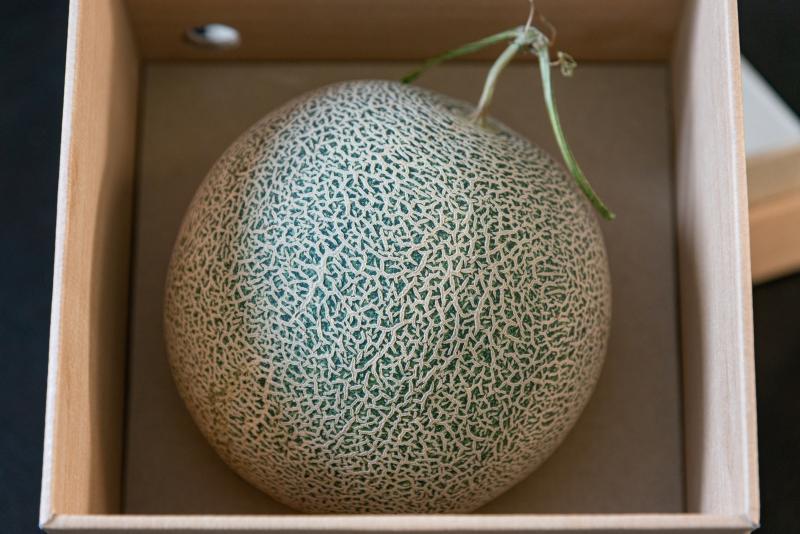
Strolling through my local market and spotting the array of melons always takes me back to childhood summers, filled with sunshine and juicy bites of fresh fruit.
It’s amazing to see, but you can find upwards of a dozen different varieties on the US market, with cantaloupe, watermelon, and honeydew being the most common and beloved by many, including me.
When I’m choosing melons, I just think about these simple pointers to make sure I get what suits my taste and tummy best:
More Acidic Melons

- Watermelon: Surprisingly, these are on the acidic side, which might catch you off guard given their sweet taste.
- Crenshaw Melon: They’ve got a bit of tartness to them, despite their overall sweetness.
- Galia Melon: This variety also leans towards the acidic side, offering a refreshing but slightly tangy flavor.
- Canary Melon: While not as common, Canary melons can have a subtle acidity beneath their sweet exterior.
Less Acidic Melons
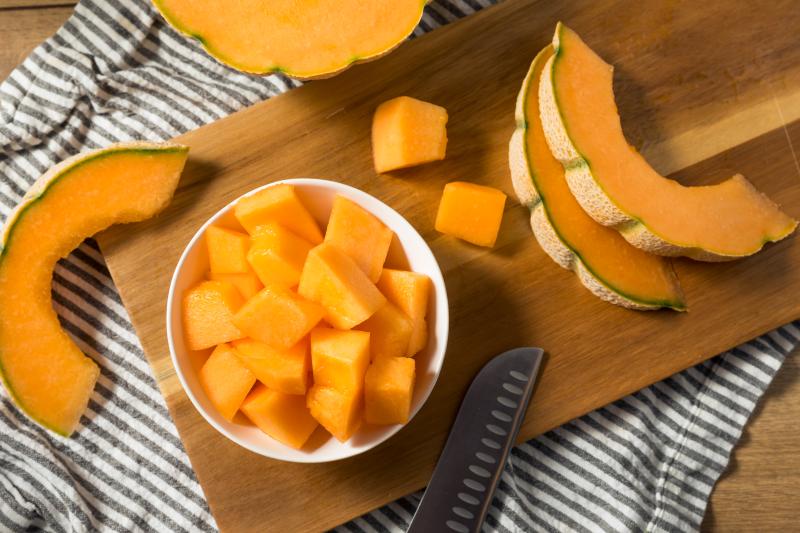
- Honeydew Melon: These are my go-to for a less acidic option. They’re super mild and easy on the stomach.
- Cantaloupe: Another great choice for those looking for sweetness without much acidity.
3. Where the Fruit is Grown
Geographical location plays a role too. Melons grown in one region can taste different from those grown in another, due to differences in climate, soil, and farming practices.
This can affect not just the flavor but the acidity and sweetness levels too.
Melons vs. Other Fruits
Diving into the world of fruit acidity, I’ve discovered that melons are the gentle souls of the bunch. They nestle comfortably in the less acidic fruit category, blessing my taste buds with their mild, sweet essence.
This is a big win for someone like me, who finds stronger acidity a bit too much to handle.
And guess what? Bananas are in the same boat, delivering that soft, sweet kick I can’t get enough of.
Let’s see how the acidity level of melons compares in the fruit world:
Strawberries: Generally have a higher acidity than melons, with a pH that makes them noticeably tangier.
Mangoes: Unripe mangoes are quite acidic, more so than most melons. However, as they ripen, their acidity decreases, potentially aligning more closely with melons’ mild acidity levels.
Cherries: Typically, cherries have a moderate acidity level, often higher than that of melons but not as high as the most acidic fruits like some berries.
Pineapples: These are among the more acidic fruits, with a lower pH than melons, making them significantly more tart.
Apples: The acidity of apples varies widely; some are more acidic than melons (like Granny Smith), while others are closer in acidity to melons (like Red Delicious).
In summary, melons are on the lower end of the acidity scale compared to strawberries, unripe mangoes, and pineapples, which are all higher in acidity.
Apples and cherries can vary but are generally found to be more acidic than melons as well.
Nutritional Bounty of Melons
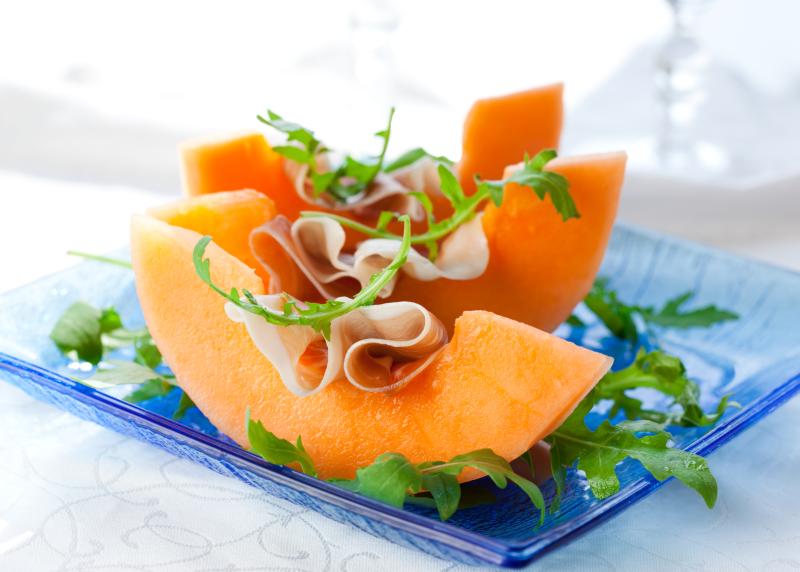
I’ve noticed something pretty cool among my friends and family, and maybe you’ve seen it too: almost everyone enjoys melons in one way or another.
And honestly, that’s fantastic news because these juicy fruits are absolute powerhouses of vitamins and minerals. Let’s dive a bit deeper:
Vitamin C: A cup of cantaloupe provides about 67% of the daily value (DV), making it a powerhouse for immunity and skin health.
Vitamin A: That same cup of cantaloupe? It also delivers around 120% of the DV, great for vision and skin.
Potassium: Honeydew melon shines here, with a cup providing about 12% of the DV, supporting heart and muscle function.
Hydration: Melons are 90% water, making them perfect for staying hydrated without much effort.
Fiber: With about 1.4 grams per cup, melons contribute to about 5% of the DV, aiding in digestion.
Calories: A cup of melon balls has roughly 60 calories, making it an ideal low-calorie snack.
When I mention a cup of melon, weighing about 180 grams, I’m talking about a small, ready-to-eat portion, not the whole melon, which can weigh anywhere from a few pounds to over 20 pounds depending on the type.
Melons: A Low-Acidity Diet’s Best Friend
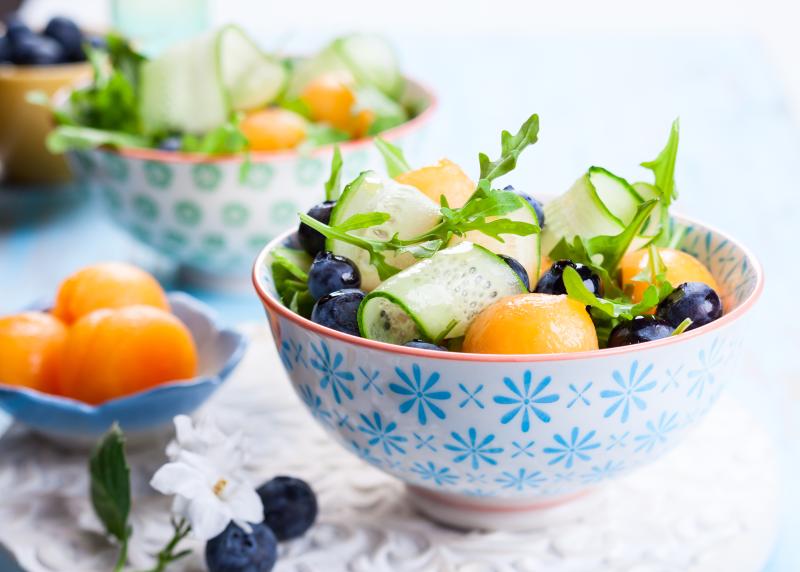
Over the years, I’ve come to realize that melons, due to their low acidity and high water content, are ideally suited for my stomach-sensitive diet.
But what really wins me over is their versatility in the kitchen. Whether I’m enjoying them fresh, straight out of the fridge, or using frozen melon chunks to cool down my drinks, melons never fail to add that refreshing touch to my meals.
Plus, having frozen melon on hand means you’ve always got a quick, healthy snack ready to go, no prep required.
Just a heads-up, though, I make sure to keep my portions in check, as eating too much of anything isn’t a good idea.
Here are some balanced ways to integrate melons into your diet:
Smoothies: Blend a cup of frozen cantaloupe chunks with one banana, a handful of spinach, and a splash of coconut water for a digestion-friendly smoothie.
Melon & Cucumber Salad: Mix honeydew melon balls with cucumber slices, feta cheese, and a sprinkle of mint for a hydrating and refreshing salad.
Melon and Avocado Salad: Combine cubed cantaloupe with ripe avocado slices, cherry tomatoes, and arugula. Drizzle with a light lemon vinaigrette for a salad that’s rich in contrasts, blending the melon’s sweetness with the creamy avocado and the tangy dressing, all while staying gentle on the stomach.
Final Thoughts
Wrapping up, it’s clear that melons are not just a treat for the taste buds but also a boon for our health, especially for those of us with a keen eye on acidity.
Their low acidity levels, combined with a wealth of nutrients, make melons a smart choice for anyone looking to enjoy fruits without the worry.
Whether you’re blending them into a smoothie, tossing them into a salad, or simply enjoying them fresh, melons offer a versatile, delicious, and stomach-friendly option.
So next time you’re pondering over fruits at the market, remember the gentle, sweet world of melons waiting to be enjoyed.